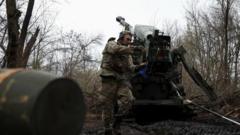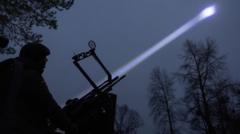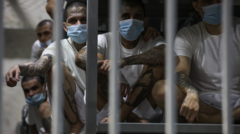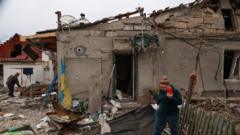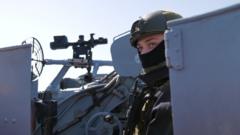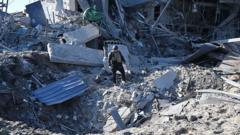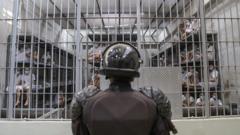President Vladimir Putin's recent announcement of a brief Easter truce in Ukraine has ignited skepticism and cautious optimism among observers. While Ukraine's leadership questions the sincerity of the ceasefire, diplomatic efforts hint at a possible window for negotiations.
Analyzing Putin's 'Easter Truce': A Step Towards Peace or a Strategic Maneuver?

Analyzing Putin's 'Easter Truce': A Step Towards Peace or a Strategic Maneuver?
A review of the implications surrounding Putin's 30-hour Easter truce declaration amidst ongoing conflicts in Ukraine, examining perspectives from both sides and the potential for peace negotiations.
In a surprising move, President Vladimir Putin declared a unilateral Easter truce in Ukraine, citing humanitarian reasons, even as the conflict has intensified in recent times. This 30-hour ceasefire, announced late Saturday, comes on the heels of diplomatic initiatives aimed at peace, particularly following a proposal for a comprehensive 30-day ceasefire by the Trump administration last month, which Ukraine accepted, but Russia thwarted.
Ukrainian President Volodymyr Zelensky has expressed skepticism regarding the truce's authenticity, pointing out that the Russian military continues to engage in combat operations in certain regions. Meanwhile, Russia's defense ministry asserts that its forces are adhering to the ceasefire and accuses Ukraine of violations.
Questions linger over whether this brief truce serves as a genuine peace effort or is merely a public relations move aimed at improving relations with the incoming Trump administration. There are indications that the Kremlin may be attempting to project itself as a peacemaker, especially with Trump's administration reportedly growing impatient with the ongoing hostilities and threatening to withdraw from peace negotiations.
However, some analysts remain optimistic about the prospects for lasting peace. The truce, albeit short-lived, reflects ongoing international diplomatic efforts. High-level talks between US representatives and Russian officials in recent weeks hint at potential avenues for resolution. Could the truce evolve into a more substantial agreement?
While skepticism reigns on the ground with reports of continued skirmishes, diplomatic discussions remain largely opaque, allowing for the possibility that significant developments could arise unexpectedly from behind closed doors. The current political landscape may yet yield surprising outcomes as the world watches this precarious situation unfold.

